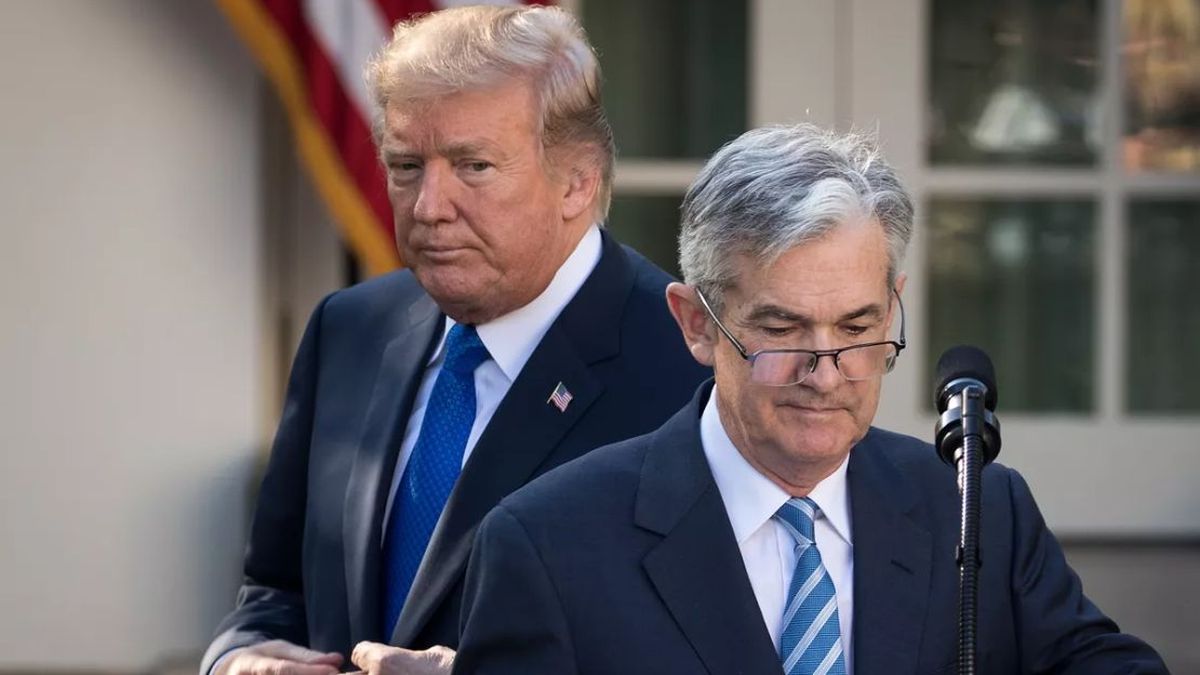A little over a month after Donald Trump’s inauguration, there has already been a lot of speculation about Trump 2.0 and what it will be like, which is why it is interesting to know the vision of a prestigious economist and academic, who, among other activities, served as chief economist of the Fund. International Monetary Fund (IMF) during the famous global financial crisis, Olivier Blanchardwho It lowers the supposed economic agenda a few decibels. According to the French economist, during a meeting organized by PIIE Insider, the institutional power with which the Republican leader assumes control of both chambers of Congress and the Supreme Court, something not seen even in the 1930s with Roosevelt, will allow you to implement his economic agenda, which so far has been clear about its intentions: tariffs to protect the United States, tax cuts to help businesses, and the expulsion of unauthorized immigrants. What would Trumponomics be like according to Blanchard?
The case of tariffs
Trump promised to impose tariffs on imports and although some argue that he could use this as an opening tactic in a negotiation and back down if he gets what he wants, Blanchard is skeptical. “The initial effects may work out largely as Trump hopes: US imports will fall, tariff revenues will rise (although not as much as he predicts, precisely because the tax base, that is, imports, will decrease) and the country’s trade deficit will decrease.”he explained and warned that this will only be the beginning of the story.
“Assume, first, that there are no retaliatory tariffs from China or Europe, as American demand shifts from foreign to domestic goods, greater demand for domestic goods in an economy already at full employment will put upward pressure on prices, and that pressure will force the Fed to raise interest rates to keep inflation in check, then, due to both higher rates and a better trade balance, The dollar will strengthen, just the opposite of what Trump wants. “US exports will suffer and the trade deficit will not improve much, if at all,” he argued.
Now, Chinese and European retaliation will probably change history, but not for the better, as American exporters will suffer more and the trade balance may not improve at all. “On net, declining imports and exports may lead to lower rather than increased economic activity; even then, tariffs will still lead to higher inflation and higher interest rates, which that will leave the Trump administration with little to show for the increase in tariffs.”
Blanchard then poses What will Trump do about exporter discontent, little (if any) improvement in the trade deficit, likely higher inflation and a stronger dollar? “It would be like Trump to redouble efforts, but opposition from exporters and the inflationary effects of imposing new tariffs are likely to dissuade him from doing so, nor is he likely to back down and reduce tariffs. Therefore, The most likely scenario is that tariffs remain in place. If so, the initial good news on the trade and production fronts, perhaps lasting until the 2026 midterm elections, will fade, leaving only the usual adverse effects of less trade, i.e. less use of comparative advantage,” he predicted.
IMF chief economist Olivier Blanchard.
The prestigious economist and academic, former IMF, Olivier Blanchard.
Tax cuts
Trump vowed to extend tax cuts enacted in 2017something that is very likely to happen. In addition, he has repeatedly suggested that Social Security benefits and tips become completely non-taxable, that state and local tax deductions be increased, and that the corporate tax rate, which was reduced from 35% to 21% in 2017, it will be further reduced to 15% for manufacturing companies. “However, several conservative House Republicans are likely to oppose these additional measures, leading to a smaller but still substantial fiscal package.”.
Blanchard points out that any discussion of fiscal plans must start from the fact that the federal budget deficit is already extremely large. The federal debt-to-GDP ratio is 100%, the deficit is around 6.5% of GDP, and the primary deficit is around 3.5%. “If the 2017 tax cuts were allowed to expire, that would reduce the deficit by about 1% of GDP in 2025, but even under this assumption, the Congressional Budget Office forecasts were for primary deficits of about 3%. as far as the eye could see. The measures Trump is considering would increase that figure by about 1% to 2%, leading to a sustained primary deficit of 4% to 5% and a rapid rise in the debt ratio. If the interest rate and the growth rate were approximately equal, which seems a reasonable hypothesis, this would imply an adjustment of the primary deficit of 4% to 5% percent of GDPI, or equivalently, from 16% to 20% of the federal budget, to stabilize the debt ratio. This is an extremely high figure and there is no reason to think that cuts in corporate tax rates, even if they boosted investment and potential growth, would substantially reduce the deficit in the coming years,” says the French professor.
Immigration and employment
Trump promised to deport unauthorized immigrants. It is estimated that there are about 11 million and there is talk of deporting around a million a year. Total employment in the US is about 160 million people, so “If you deported a million immigrants a year, you would reduce employment by 0.5% annually, with a final total decrease of 5%. Job vacancies would increase and remain high, as would the ratio of vacancies to unemployed workers, leading to sustained inflationary pressures. The Fed would respond by raising interest rates, which would cause an appreciation of the exchange rate, again, not what Trump expects,” anticipates Blanchard. And he adds that “this will not happen, given the magnitude of the numbers in this scenario. Disgruntled employers, especially in agriculture, construction, and restaurants, would quickly become vocal enough to slow the pace of deportations. Inflation, which has also proven to be extremely costly politically, would probably make Trump think twice. Therefore, It must be assumed that the deportations, while they will occur, will be largely symbolic and will affect tens or hundreds of thousands of people rather than millions. To the extent they occur, they will lead to inflation and higher interest rates, and possible conflict with the Fed.”
The implications and role of the Fed
Blanchard concludes that if Trump applied all the measures he has suggested, the question would be how many years would it take for investors to question the status of risk-free US Treasury bonds?. “No one knows for sure whether that questioning would begin during his presidency or afterward; if it did, and investors began pricing in a risk premium, it would likely lead to more responsible fiscal policy; And leaving aside this question of risk, what is likely, however, is that further fiscal expansion, starting from an economy close to full employment, will lead to inflation and, by implication, to higher monetary policy rates than usual. Fed and a stronger dollar. Once again, this scenario would trigger a possible conflict with the Fed.”
That is why he highlights that perhaps the most crucial question is what the Fed will do: If he sticks to his mandate, he will hinder some of Trump’s hopes for tariffs, deportations and tax cuts. He will have to limit economic overheating, raise rates and make the dollar appreciate. So, The big question is whether Trump can force the Fed to abandon its mandate and keep interest rates low in the face of higher inflation. A seat on the Fed board will open in January 2026 and Trump could try to appoint a more docile member to the position, if this is the case and the board accepts (which is unlikely) the result will be rates lows, overheating and higher inflation. “Given the unpopularity of high inflation, not to mention the reaction of financial markets to the Fed’s loss of independence, this prospect may be enough to make Trump hesitate to pursue this option.”
Without going into other topics such as deregulation (especially of the financial system), energy policy, freedom of action for the cryptocurrency industry and the effects of greater economic uncertainty on investment and consumption, Blanchard summarizes his predictions: Trump’s economy may look good for a while, with strong growth (despite voter perceptions in the last election, the Biden administration has left the Trump administration a strong US economy, a precious gift in this context) . Predicting an immediate catastrophe or stock market crash, as some did in 2016, is reckless. But the initial positive effects will likely fade and possibly reverse, perhaps before Trump’s term ends.
Source: Ambito
I’m a recent graduate of the University of Missouri with a degree in journalism. I started working as a news reporter for 24 Hours World about two years ago, and I’ve been writing articles ever since. My main focus is automotive news, but I’ve also written about politics, lifestyle, and entertainment.




